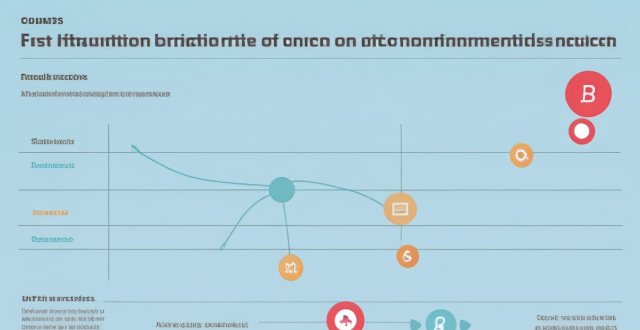Climate Effects

What role does access to healthcare play in mitigating the health effects of climate change ?
The text discusses the role of healthcare accessibility in mitigating the health effects of climate change. It highlights the importance of preventive care, emergency response, and chronic disease management in reducing vulnerability to climate-related health risks. The text also explores direct and indirect effects of climate change on human health, such as heat-related illnesses, respiratory issues, vector-borne diseases, mental health impacts, nutritional impacts, and displacement and migration. Finally, it suggests adaptation strategies for healthcare systems, including building resilient infrastructure, integrating climate change considerations into public health systems, and training community health workers on climate change impacts.

What policies are being implemented to mitigate the effects of climate change on national security ?
Climate change poses a significant threat to national security, affecting areas such as food and water scarcity, natural disasters, and displacement of people. Governments around the world are implementing various policies to mitigate these effects and ensure the safety and stability of their nations. Key policies include transitioning to clean energy sources, promoting sustainable agriculture practices, protecting coastal communities and infrastructure, collaborating globally to address climate change, and building resilience to natural disasters through disaster risk reduction and preparedness. By implementing these policies, governments aim to not only reduce the direct effects of climate change but also strengthen their overall capacity to handle related challenges, ensuring the continued security and stability of their nations.

How do climate disasters affect human populations ?
Climate disasters, such as hurricanes and floods, have significant impacts on human populations, including loss of life, injuries, damage to property, displacement, and food insecurity. Indirect effects include economic disruption, mental health issues, environmental degradation, social disruption, migration crises, and political instability. Mitigating these effects requires preparedness, response, and recovery efforts, including early warning systems, emergency plans, resilient infrastructure, community education, and climate change mitigation.

How can we use climate predictions to mitigate the effects of climate change ?
Climate predictions are vital in mitigating climate change impacts. They help in adaptation planning, guiding mitigation strategies, informing policy development, raising awareness, and driving research and innovation. By understanding future climate conditions, we can take proactive measures to reduce the effects of climate change on our environment and society.

How does climate change affect poverty levels ?
The article discusses the various ways in which climate change affects poverty levels around the world. It highlights the direct effects of extreme weather events and health impacts, as well as the indirect effects on food security, livelihoods, and gender inequality. The article also suggests strategies for mitigating the impact of climate change on poverty, including investing in renewable energy sources, supporting smallholder farmers, enhancing resilience through improved infrastructure, promoting gender equality, and providing social protection programs.

What are the implications of climate variability for human health ?
Climate variability significantly affects human health through direct and indirect effects. Direct effects include extreme weather events like heatwaves, cold spells, intense rainfall, storms, hurricanes, wildfires, and ozone layer depletion, which can lead to various health issues. Indirect effects involve waterborne diseases, food security problems due to changes in crop yields and pest spread, and mental health issues related to displacement and economic stress. Mitigating climate change and adapting to its impacts are crucial for protecting public health.

Can climate-smart technology be used to mitigate the effects of climate change ?
Climate-smart technologies aim to reduce greenhouse gas emissions and enhance resilience to climate change impacts. Renewable energy sources, energy efficiency improvements, and nature-based solutions are key examples. These technologies offer promising solutions but face challenges related to cost, policy, and potential unintended consequences.

What are the long-term effects of climate change on children ?
Climate change has far-reaching effects on children's health, including physical, mental, and emotional impacts. Poor air quality, extreme weather events, and food insecurity can harm children's physical health. Trauma and stress from climate-related disasters, as well as fear and anxiety about the future, can affect their mental health. Loss of home and community, along with intergenerational trauma, can impact their emotional health. Addressing these challenges requires a comprehensive approach to ensure a healthier future for all children.

How can climate cooperation help mitigate the effects of extreme weather events ?
Climate cooperation is crucial in mitigating the effects of extreme weather events. It involves collaborative efforts between nations, organizations, and individuals to address climate change challenges. Key points include development of early warning systems, enhanced disaster risk reduction, promotion of sustainable practices, strengthened international agreements and policies, increased funding and resource allocation, promotion of environmental education and awareness, and facilitation of humanitarian aid and recovery efforts. By working together, we can build a more resilient world capable of withstanding the challenges posed by a changing climate.

Can studying the psychological effects of climate change help in developing more effective adaptation strategies ?
This article explores how understanding the psychological effects of climate change can contribute to developing effective adaptation strategies. It outlines key areas such as impact on mental health, influence on behavioral change, public perception and awareness, community resilience, and policy making processes. By addressing these areas, it is possible to create more resilient and sustainable communities in the face of climate change.

How does climate change impact mental health ?
Climate change has a multifaceted impact on mental health, including direct effects such as trauma from extreme weather events and environmental degradation, and indirect effects like economic strain and social disruption. Mitigating this impact involves raising awareness, strengthening community resilience, investing in mental health services, advocating for policies that address both climate change and public health concerns, and encouraging sustainable practices.

How can technology help us predict and mitigate the effects of climate disasters ?
The text discusses the role of technology in predicting and mitigating the effects of climate disasters. It highlights the importance of satellite imagery, weather modeling, AI, and ML algorithms in forecasting climate disasters. The article also emphasizes the significance of early warning systems, smart infrastructure, and renewable energy sources in mitigating the impact of these disasters. Overall, the text suggests that technology can play a crucial role in helping us prepare for and respond to climate disasters.

How can we protect children from the adverse effects of climate change ?
Climate change poses significant threats to children's well-being, affecting their health, education, nutrition, and mental health. To protect them, we can focus on education and awareness, health protection, nutrition and food security, mental health support, and infrastructure and urban planning. This includes integrating climate change education into school curriculums, engaging communities in workshops, ensuring safe housing and air quality, improving healthcare accessibility and vaccination programs, establishing school gardens and supporting local farmers, providing counseling services and community support networks, and developing resilient infrastructure and safe public spaces.

Can sustainable fishing practices help mitigate the effects of climate change on the environment ?
Sustainable fishing practices are crucial for mitigating the effects of climate change on the environment. These practices aim to conserve marine ecosystems, reduce carbon emissions from fisheries, promote responsible consumption, maintain biodiversity, enhance carbon sequestration, and promote ecosystem-based management. By adopting sustainable fishing practices, we can help maintain the health and balance of our oceans in the face of climate change. As individuals and communities, we must support these practices and make responsible choices when consuming seafood products to protect our planet's delicate ecosystems and ensure a sustainable future for all.

What are some innovative solutions for mitigating the effects of climate change on biodiversity ?
Climate change poses a significant threat to biodiversity, but there are several innovative solutions that can help mitigate its effects. These include protecting and restoring habitats, promoting sustainable land use practices, encouraging biodiversity-friendly farming practices, supporting indigenous communities, investing in research and technology, and promoting education and awareness. By implementing these strategies, we can create more resilient ecosystems that are better able to withstand the impacts of climate change.

What are the long-term effects of not having a comprehensive climate education program ?
The text discusses the various long-term effects of not implementing a comprehensive climate education program. It highlights the lack of awareness and understanding about climate change, the proliferation of misinformation and misconceptions, limited adaptation and mitigation strategies, inadequate response to climate events, lost opportunities for green jobs, increased costs of climate change impacts, polarized public opinion, and ineffective policy decisions. The text emphasizes the importance of investing in comprehensive climate education programs to address these issues effectively.

What are the most common side effects of vaccines ?
The most common side effects of vaccines are pain and swelling at the injection site, fever and chills, fatigue and headaches, and nausea and diarrhea. These symptoms are usually mild and last for a few days to a week. To manage these side effects, you can take over-the-counter pain relievers, apply ice packs, drink plenty of fluids, get enough sleep, and eat a healthy diet. If you experience severe side effects such as an allergic reaction or persistent symptoms, it is important to seek medical attention immediately.

What strategies can be implemented to mitigate the effects of climate change on food systems ?
Strategies to Mitigate the Effects of Climate Change on Food Systems include sustainable agriculture practices, agroforestry and reforestation, climate-resilient crop breeding, livestock management, food waste reduction, policy and advocacy, and research and development. These efforts aim to build more resilient food systems capable of withstanding the challenges posed by climate change, ensuring food security for future generations.

What are the economic impacts of climate change ?
Climate change has significant economic impacts, including direct effects on agriculture, natural disasters, and energy sector, as well as indirect effects on labor market, insurance industry, and investment decisions. To mitigate these impacts, actions such as investing in renewable energy and implementing sustainable practices are necessary.

How can international law and policy help mitigate the effects of climate-induced migration ?
The text discusses how international law and policy can mitigate the effects of climate-induced migration. It outlines frameworks for cooperation, protection measures, and adaptation and resilience building strategies. The UNFCCC, Global Compacts for Migration, and regional cooperation mechanisms are highlighted as frameworks for cooperation. Protection measures include refugee status recognition, non-refoulement obligations, and the responsibility to protect. Adaptation and resilience building strategies involve development assistance, capacity building, and knowledge sharing. The conclusion emphasizes the urgency of pursuing these efforts to prevent human suffering and state fragility due to climate-induced migration.

What strategies can be implemented to protect forests from the effects of climate change ?
The article discusses the importance of forests in regulating the Earth's climate and outlines several strategies to protect them from climate change, including afforestation and reforestation, sustainable forest management, fire prevention and control, promoting biodiversity, and education and awareness programs.

How can we protect ourselves from the negative effects of climate change on our health ?
Climate change poses a threat to our health through extreme weather, air pollution, and the spread of diseases. To protect ourselves, we should stay informed about weather updates, maintain good health practices, reduce exposure to pollutants, adapt to environmental changes, and support sustainable practices. By being proactive, we can mitigate the negative effects of climate change on our well-being and contribute to larger efforts in combating this global issue.

How does climate change affect the environment ?
The article discusses the various impacts of climate change on the environment, including rising temperatures leading to melting glaciers and ice sheets, changes in precipitation patterns causing droughts and extreme rainfall events, and extreme weather events such as heat waves and hurricanes. It also highlights the loss and fragmentation of habitats due to range shifts and coral reef bleaching, as well as the loss of biodiversity through direct effects like species extinction and population declines, and indirect effects like food web disruptions and disease spread. The article emphasizes the need for urgent action to reduce greenhouse gas emissions and implement adaptation strategies to mitigate these impacts on our planet's ecosystems.

What are the psychological effects of climate change on children, and how can their mental health rights be protected ?
The psychological effects of climate change on children are significant and can include anxiety, fear, depression, trauma, and grief. To protect children's mental health rights, it is important to educate them about climate change, provide access to mental health services, create safe spaces for expression, and encourage advocacy and action.

How is climate change affecting children's health ?
The text discusses the impacts of climate change on children's health, which are both direct and indirect. Direct effects include increased respiratory issues due to pollen and allergens, vector-borne diseases, heat-related illnesses, and nutritional deficiencies. Indirect effects encompass mental health challenges like trauma and displacement, educational disruptions such as school closures, and social and emotional development issues. The conclusion emphasizes the need for immediate attention and interventions to address these challenges, focusing on strengthening children's resilience through healthcare, educational support, and nurturing environments.

How can we mitigate the effects of climate change ?
Mitigating the effects of climate change is a complex and multifaceted challenge that requires a combination of individual actions, technological innovations, and policy interventions. Here are some strategies that can help reduce greenhouse gas emissions and adapt to the changing climate: Individual Actions: - Reduce energy consumption by turning off lights and unplugging electronics when not in use, using energy-efficient appliances, and installing solar panels. - Use public transportation, carpool, or bike to reduce your carbon footprint. - Eat a plant-based diet to reduce your environmental impact. - Support renewable energy sources by advocating for clean energy policies and investing in renewable energy technologies like wind and solar power. - Reduce waste by practicing the three R's (reduce, reuse, recycle) to minimize waste and conserve resources. Technological Innovations: - Develop clean energy technologies such as advanced batteries, nuclear fusion, and carbon capture and storage. - Improve energy efficiency through energy-efficient building designs, appliances, and transportation systems. - Promote electric vehicles and expand charging infrastructure to reduce dependence on fossil fuels. - Implement smart grids to optimize energy distribution and integrate renewable energy sources more effectively. Policy Interventions: - Implement carbon pricing by introducing a tax on carbon emissions or implementing cap-and-trade systems to incentivize businesses and individuals to reduce their carbon footprint. - Enact clean energy policies by establishing laws and regulations that promote the development and use of renewable energy sources and phase out fossil fuel subsidies. - Invest in climate adaptation measures by allocating funds for projects that improve resilience to climate change impacts, such as seawalls, drought-resistant crops, and flood management systems. - Support international cooperation by collaborating with other countries to share knowledge, technology, and resources to address global climate challenges collectively. By taking these individual actions, embracing technological innovations, and implementing effective policies, we can work towards mitigating the effects of climate change and creating a more sustainable future for ourselves and future generations.

What are the side effects of the COVID-19 vaccine ?
The COVID-19 vaccine has been a topic of great interest and concern in recent months. While many people have received the vaccine with minimal side effects, others have reported experiencing more severe reactions. The most common side effects reported after receiving the COVID-19 vaccine include pain, redness, or swelling at the injection site, fatigue, fever, headache, muscle pain, nausea, rash, chills, dizziness, and joint pain. However, there have also been reports of serious side effects associated with the COVID-19 vaccine, including blood clots, angioedema, myocarditis, and Guillain-Barré Syndrome. It is important to note that these cases are extremely rare and far outweighed by the benefits of receiving the vaccine.

How can international cooperation help mitigate the effects of climate change ?
Climate change is a global challenge requiring collective action. International cooperation plays a crucial role in mitigating its effects through sharing knowledge, coordinating policy actions, transferring technology and innovation, and providing financial support and investment. Examples include research collaborations, the Paris Agreement, clean energy technology transfer programs, and investments in renewable energy projects.

What are the effects of climate change on biodiversity and ecosystems ?
Climate change has significant effects on biodiversity and ecosystems, including habitat loss, changes in species distribution, altered ecosystem functioning, extinction risk, and impacts on human well-being.

What are the harmful effects of chemicals on human health ?
Chemicals can have harmful effects on human health, affecting various systems in the body. Short-term exposure to chemicals can cause irritation of the respiratory system, increased heart rate and blood pressure, headaches, dizziness, and confusion. Long-term exposure to chemicals can lead to chronic bronchitis, emphysema, lung cancer, coronary artery disease, heart failure, stroke, neurological disorders, memory loss, and mood disorders. It is essential to be aware of the potential harmful effects of chemicals and take necessary precautions to protect our health.